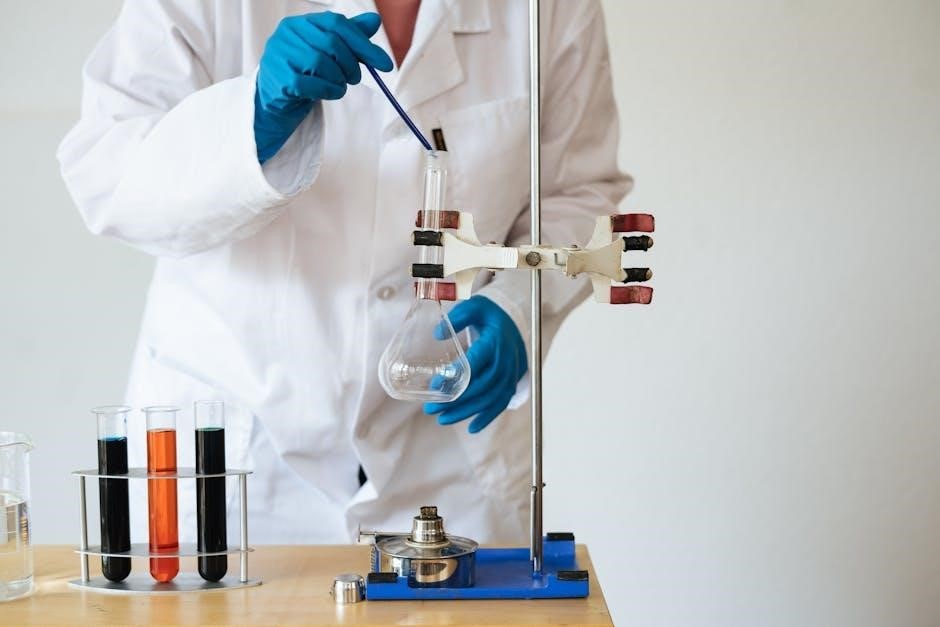The nasogastric tube removal procedure is a straightforward process requiring careful execution to ensure patient safety and comfort. It involves securing the plug, removing tape, and gently withdrawing the tube while the patient breathes slowly. Proper technique is essential to prevent complications such as bleeding or tube knotting. This procedure is typically quick, but it demands attention to detail and adherence to clinical guidelines to avoid discomfort or accidental dislodgment. Ensuring the patient’s well-being and monitoring for any post-removal issues are critical steps in the process.
1.1 Overview of Nasogastric Tubes
A nasogastric (NG) tube is a flexible, hollow tube inserted through the nose, passing through the esophagus, and into the stomach. It is commonly used for feeding, decompression, or aspiration of gastric contents. NG tubes vary in size, material, and design, with differing purposes such as Levin tubes for feeding or Salem tubes for decompression. Proper placement is critical to ensure effectiveness and safety, typically confirmed by pH testing or imaging. Improper placement can lead to complications like aspiration or tube mispositioning. Understanding the type and purpose of the NG tube is essential for healthcare providers to ensure appropriate care and safe removal. Regular monitoring of the tube’s position and function is vital to prevent complications and ensure patient comfort.
1.2 Importance of Proper Removal Techniques
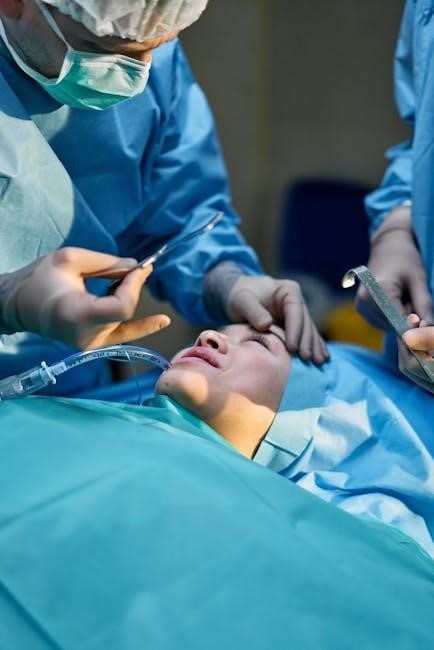
Proper nasogastric tube removal techniques are crucial to ensure patient safety and comfort. Improper removal can lead to complications such as bleeding, discomfort, or accidental dislodgment of the tube. Securing the plug and gently withdrawing the tube in one smooth motion minimizes the risk of these issues. Additionally, proper technique helps prevent tube knotting or breakage, which can prolong the removal process and cause distress. Adhering to established guidelines ensures the procedure is both effective and safe, reducing the likelihood of post-removal complications. Proper techniques also promote patient trust and cooperation, making the process less stressful for both the patient and healthcare provider. Attention to detail and adherence to protocols are essential for a successful removal.

Pre-Removal Preparation
Pre-removal preparation involves verifying physician orders, assessing the patient’s condition, and gathering necessary supplies. Ensuring the patient is ready and equipment is available facilitates a smooth procedure.
2.1 Verifying Physician Orders
Verifying physician orders is a critical step before nasogastric tube removal. Ensure the order specifies the removal, including any conditions like trial clamping to assess gastric function. Review the medical record to confirm the tube is no longer needed. If the tube was used for decompression, check for resolution of symptoms like nausea or abdominal distension. For feeding tubes, ensure alternative nutrition plans are in place. Documentation of the order and patient readiness is essential to proceed safely and avoid unnecessary delays or complications. This step ensures compliance with medical directives and patient-specific care plans.
2.2 Patient Assessment Before Removal
Before removing the nasogastric tube, a thorough patient assessment is essential to ensure safety and readiness. Check for resolution of symptoms like nausea, vomiting, or abdominal distension, which initially warranted tube placement. Assess the patient’s ability to breathe and cough effectively to minimize aspiration risk. Evaluate the patient’s emotional state and address any anxiety. Ensure the patient can sit upright or be positioned at a 45-degree angle to facilitate easy removal. Verify gastric function and tolerance to feeding or decompression. Document the patient’s clinical status and readiness for tube removal. This assessment ensures the procedure is performed safely and effectively, avoiding potential complications.
2.3 Necessary Equipment and Supplies
To ensure a smooth and safe nasogastric tube removal, gather essential equipment and supplies beforehand. These include disposable gloves to maintain sterility, gauze pads for cleaning, and a tape remover to gently detach the tube from the patient’s skin. A biohazard bag is needed for proper disposal of the used tube and materials. Additionally, a clamp or plug may be required to secure the tube during removal. Having these items readily available ensures the procedure is efficient and minimizes discomfort for the patient. Proper preparation with the right supplies is crucial for maintaining safety and hygiene during the removal process.
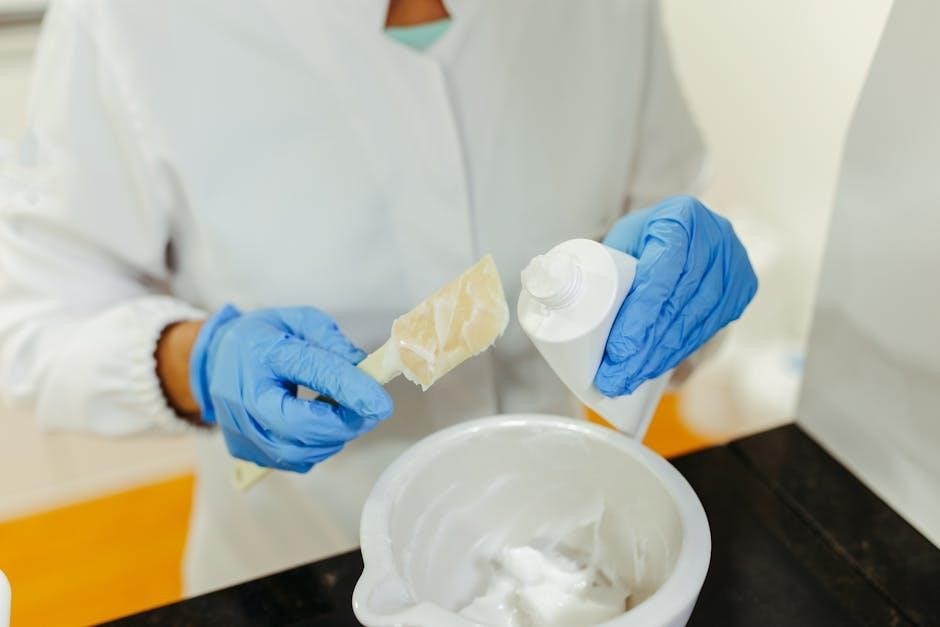
Step-by-Step Removal Procedure
The nasogastric tube removal involves securing the plug, removing tape, positioning the patient, and gently withdrawing the tube to ensure patient safety and comfort properly.
3.1 Securing the Plug or Clamp
Securing the plug or clamp is the first step in the nasogastric tube removal process. Begin by locating the plug or clamp on the tube, typically near the patient’s nose. Ensure the plug is fully closed to prevent any residual contents from spilling. Gently hold the tube in place and instruct the patient to take slow, deep breaths to relax. This step is crucial to maintain the tube’s position and prepare for safe removal. Properly securing the plug or clamp helps avoid any complications during the procedure. Always verify physician orders before proceeding. This ensures compliance with medical guidelines and patient safety. The patient should remain still during this step to prevent accidental movement of the tube.
3.2 Removing Tape and Securing Devices
Before removing the nasogastric tube, carefully remove the tape and securing devices that hold the tube in place. Gently peel the tape away from the skin to avoid causing discomfort or irritation. If the tape is particularly stubborn, a small amount of adhesive remover may be used. Once the tape is removed, inspect the area for any remaining adhesive residue and clean it if necessary. Ensure the tube remains securely positioned during this process to prevent accidental displacement. After removing the tape and securing devices, the tube should be ready for withdrawal. Properly securing or removing these devices is essential to maintain patient comfort and safety throughout the procedure.
3.3 Patient Positioning and Breathing Techniques
Proper patient positioning is crucial during nasogastric tube removal to ensure comfort and safety. The patient should be seated upright or have the head of the bed elevated to at least 45 degrees to prevent aspiration. If the patient is unable to sit up, they should lie on their side. Encourage the patient to take slow, deep breaths to relax and reduce anxiety. Instruct them to exhale slowly as the tube is withdrawn, as this can help minimize discomfort. Adequate breathing techniques can also help the patient tolerate the procedure better. Ensuring the patient is properly positioned and using appropriate breathing techniques are essential steps to facilitate a smooth and safe removal process.
3.4 Gently Withdrawing the Tube
Gently withdrawing the nasogastric tube is a critical step in the removal process. Once the patient is properly positioned and breathing deeply, the tube should be removed in one smooth, continuous motion. This minimizes discomfort and reduces the risk of complications. Avoid jerky movements or pulling the tube forcefully, as this can cause irritation or bleeding. Ensure the tube is removed while the patient exhales to prevent any residual material from entering the airway. After withdrawal, inspect the tube to confirm it is intact and free of knots or kinking. Proper disposal of the tube and any used materials is essential for maintaining infection control standards. Monitoring the patient for any signs of distress during this step is also vital.
3.5 Post-Removal Patient Care
After removing the nasogastric tube, it is essential to provide appropriate patient care to ensure comfort and prevent complications. Monitor the patient for signs of bleeding, discomfort, or respiratory distress. Assess the nares for irritation or swelling and apply a topical cream if necessary. Offer the patient water to rinse their mouth and throat to alleviate any discomfort. Observe for gagging, coughing, or shortness of breath, which may indicate residual irritation. Provide emotional reassurance to ease anxiety. Document the removal process and any immediate post-removal observations. Ensure the patient is stable before leaving their side. If any complications arise, such as bleeding or difficulty breathing, notify a healthcare provider promptly for further evaluation and intervention.
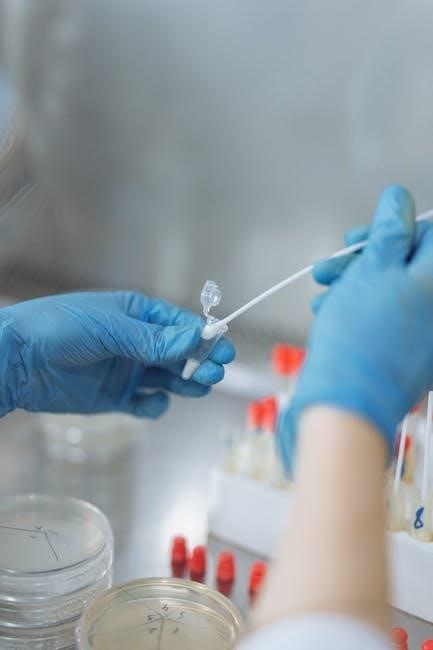
Post-Removal Care and Monitoring
Post-removal care involves monitoring for complications, assessing patient comfort, and ensuring proper wound healing. Observe for bleeding, respiratory issues, or discomfort, and provide emotional support as needed.
4.1 Assessing for Complications
After nasogastric tube removal, it is crucial to assess for potential complications. Monitor for signs of bleeding, respiratory distress, or discomfort. Check for nasal or throat bleeding, coughing, or shortness of breath, which may indicate trauma during removal. Inspect the nostrils and surrounding skin for redness, swelling, or discharge, as these could signal infection or irritation. Assess the patient’s vital signs and overall comfort. Be vigilant for any unexpected reactions, such as nausea or dizziness. If complications arise, document them immediately and notify the healthcare team for appropriate intervention. Ensuring patient stability post-removal is essential to prevent long-term issues and promote recovery.
4.2 Monitoring for Discomfort or Bleeding
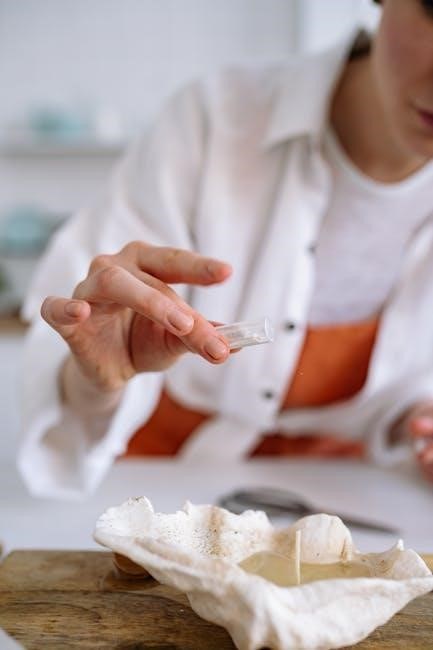
After nasogastric tube removal, monitor the patient for signs of discomfort or bleeding. Check for nasal or gastrointestinal bleeding by inspecting the nostrils and the tube for blood. Assess the patient’s pain level and observe for symptoms like coughing, shortness of breath, or throat irritation. Ensure the patient is comfortable and free from distress. If bleeding occurs, apply gentle pressure to the nares and notify the healthcare provider. Document any findings and provide reassurance to the patient. Monitoring for these issues ensures prompt intervention and prevents potential complications. Regular assessment helps maintain patient safety and comfort during the post-removal period.
4.3 Providing Emotional Support to the Patient
Providing emotional support during and after nasogastric tube removal is crucial for patient comfort and reassurance. Explain the procedure clearly to reduce anxiety and ensure the patient understands the process. Offer a calming presence, and encourage deep breathing or relaxation techniques to ease tension. Address any concerns or fears the patient may have, emphasizing that the removal is quick and generally well-tolerated. After the procedure, check in with the patient to ensure they are emotionally and physically comfortable. Positive reinforcement and empathy can help alleviate any distress. Ensuring the patient feels supported fosters trust and cooperation, making the experience less intimidating and more manageable for them.

Common Complications and Troubleshooting
Common complications during nasogastric tube removal include resistance, knotting, or accidental dislodgment. Troubleshooting involves gentle maneuvers, ensuring patient safety, and addressing any discomfort promptly to prevent further issues.
5.1 Difficulty in Tube Removal
Difficulty in removing a nasogastric tube can occur due to tube knotting, adherence to nasal mucosa, or accidental embedding. To address this, ensure the tube is well-lubricated with warm water to reduce friction. If resistance is felt, avoid forceful removal, as this may cause injury or tube breakage. Instead, gently manipulate the tube while guiding the patient to breathe slowly. In some cases, applying gentle traction over several minutes can help dislodge the tube. If difficulty persists, consult a healthcare provider to prevent complications. Proper technique and patience are key to resolving removal challenges effectively.
5.2 Preventing Tube Knotting or Breakage
Preventing nasogastric tube knotting or breakage is crucial for safe removal. Ensure the tube is properly secured with tape and a nasal clip to avoid movement. During insertion, guide the tube gently to prevent coiling. Regularly inspect the tube for signs of wear or damage. Flush the tube with water after feedings to maintain patency. Avoid using excessive force during removal, as this can cause breakage. If resistance is encountered, do not pull forcefully; instead, manipulate the tube carefully. Proper handling and maintenance significantly reduce the risk of knotting or breakage, ensuring a smooth removal process and patient safety.
5.3 Managing Accidental Tube Dislodgment
If the nasogastric tube dislodges accidentally, remain calm and assess the situation immediately. Check the patient for any signs of distress or complications, such as bleeding or respiratory issues. If the tube is partially dislodged, do not attempt to reinsert it; instead, remove it completely to prevent further complications. Inspect the tube for any damage or blockages. Document the incident, including the circumstances and the patient’s response. Provide emotional reassurance to the patient and monitor for any adverse reactions. If necessary, consult a healthcare provider for further guidance or to reassess the need for tube replacement. Proper handling and documentation are essential to ensure patient safety and maintain continuity of care.
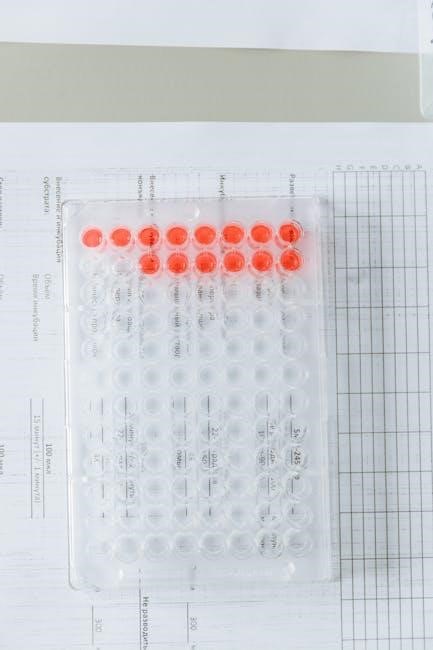
Documentation and Follow-Up
Accurate documentation is crucial after nasogastric tube removal. Record the procedure, any complications, and patient response. Schedule follow-up appointments and update electronic health records for continuity of care.
6.1 Recording the Removal Procedure
Accurate documentation of the nasogastric tube removal is essential for legal and clinical purposes. Record the date, time, and method of removal, along with any complications encountered. Note the patient’s response, including discomfort or bleeding, and document the healthcare provider’s verification of the procedure. Ensure all details are entered into the patient’s electronic health record (EHR) for continuity of care. This documentation serves as a reference for future medical decisions and ensures accountability in the patient’s treatment plan. Proper recording also helps in tracking the patient’s recovery and addresses any post-removal concerns effectively.
6.2 Scheduling Follow-Up Appointments
Scheduling a follow-up appointment after nasogastric tube removal is crucial to monitor the patient’s recovery and address any potential complications. Ensure the appointment is scheduled within a timeframe recommended by clinical guidelines, typically 24-48 hours post-removal. During the follow-up, assess the patient’s ability to eat, swallow, and digest food without the tube. Check for any signs of bleeding, discomfort, or respiratory issues. Verify that the patient is tolerating oral or enteral nutrition well and document their progress. Provide clear instructions on dietary restrictions, if any, and address any concerns the patient may have. This follow-up ensures a smooth transition to normal feeding and confirms the success of the removal procedure.

Additional Resources and References
Access detailed guides, such as the nasogastric tube removal procedure PDF, from medical institutions or reputable websites like Nurse.org for comprehensive instructions. Utilize instructional videos on YouTube demonstrating proper techniques and clinical guidelines to ensure adherence to best practices. These resources provide step-by-step instructions, troubleshooting tips, and post-removal care advice, supporting healthcare professionals in performing the procedure safely and effectively. They also offer insights into patient education materials to help individuals understand the process and its importance. Referencing these resources ensures up-to-date, evidence-based care, promoting optimal patient outcomes and minimizing complications. Always consult the latest guidelines for the most current information.
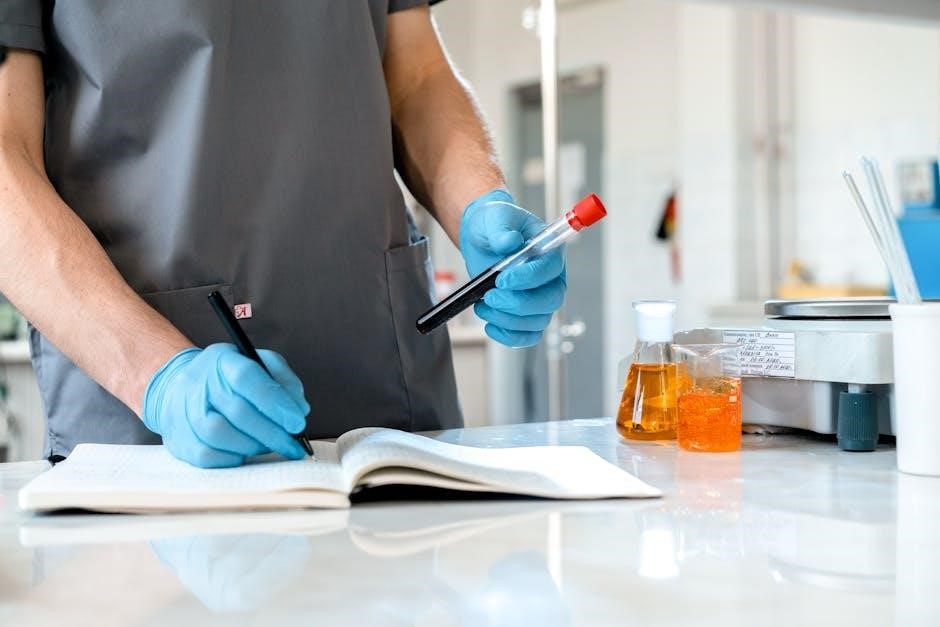
7.1 Nasogastric Tube Removal Procedure PDF
The nasogastric tube removal procedure PDF provides a comprehensive guide for healthcare professionals, detailing step-by-step instructions for safe and effective tube removal. These downloadable resources often include visual aids, such as diagrams and images, to illustrate proper techniques. The PDF typically covers pre-removal checks, patient preparation, and post-removal care, ensuring adherence to clinical standards. Many PDF guides also address potential complications, offering troubleshooting solutions for difficulties like tube knotting or resistance during removal. Additionally, they may include patient education materials to help individuals understand the process and its importance; By following the guidelines outlined in these PDFs, healthcare providers can minimize risks and ensure a smooth procedure. These resources are widely available on medical websites and institutional portals.
7.2 Recommended Guidelines and Protocols
Recommended guidelines for nasogastric tube removal emphasize adherence to standardized protocols to ensure patient safety and minimize complications. These protocols, often outlined in clinical practice guidelines, include verifying physician orders, assessing patient readiness, and using proper techniques for tube removal. Organizations such as the American Society for Parenteral and Enteral Nutrition (ASPEN) and the Centers for Disease Control and Prevention (CDC) provide evidence-based recommendations. Key steps include securing the plug, removing securing devices gently, and withdrawing the tube smoothly to prevent discomfort or bleeding. Guidelines also stress the importance of infection control measures and post-removal monitoring. Following these protocols ensures consistent, high-quality care and reduces risks associated with the procedure. Regular training and updates on guidelines are essential for healthcare providers.
